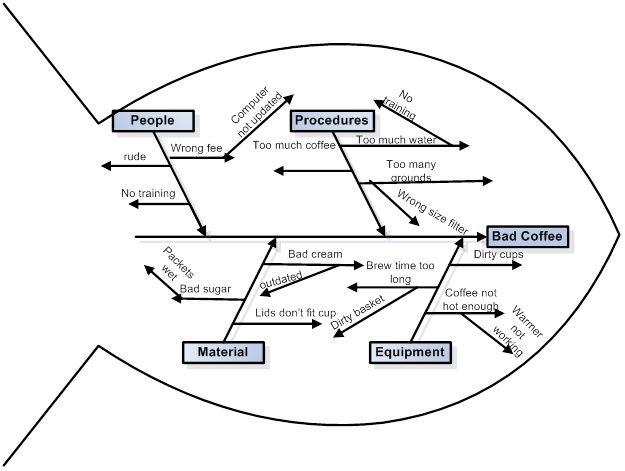People often say that the simplest solution is the right one.
And heck, if you asked me, I’d agree 100%.
Sometimes the best solution to our problems is right in front of our faces and we can’t even see it.
That’s the trick to simple and effective solutions, they are not so easy to see.
Maybe you’ll think that the first solution you can think of is the right one, but that -probably- is not the case.
Understandably, we jump to solutions. However, that doesn’t mean that is what you should do. On the contrary, you have to thoroughly investigate the issue and figure out all the details to find the most effective and simplest solution to your problems.
A quick and ineffective solution can make things worse, and can even be more damaging in the long run. Let’s put it this way:
You can’t just put scotch tape on a cracked wall and expect it to be fixed right away.
You have to know the problem with the wall, what cracked it, think about multiple solutions to the problem, and make sure you investigate the root of the problem.
I know this method is not that fast, but if you go through the following steps when solving one of your problems I assure you, you won’t have to worry about that again.
1. Get Out Of Your Desk
If you don’t know all the facts you will never reach the solution you seek. It’s time to get out of your desk, your office, or your conference room, and start to see what’s happening out there.
Spreadsheets and reports, although useful, are just data. And data will not tell you the whole truth about the problem you are facing. For example:
Let’s say you have a weekly meeting with supervisors and managers to update some info and to receive reports on how things are doing. Time passes and when you check the reports you notice that each and each week some people are arriving late or just missing the weekly meetings.

Now, the data tells you that your workers are not on time. On the other hand, the facts — gathered after interviewing the workers — tell us that 9:00 am meetings are hard because parents are getting their kids ready for school, 12:30 pm meetings are difficult because they are making lunch for their family, and more and more examples that you’ll never think about if you just review the data.
The facts are what you can observe, what you can investigate, and the real cause of the problem. And data is just a report on what needs to be done. You’ll need them both, the big picture the facts can give you, and the detailed insight that the data gets you to arrive at useful conclusions.
So remember to consider both.
2. Know What Your Problem Is Actually About
People tend to be confused about exactly what their problem is, a problem more common than you might think. Solutions and symptoms of the problems tend to be confused with the problem itself, making it hard to get to the root of it.
You have to know what your problem statement is to solve the real problem you’re facing.
Let’s put it this way:
- The office needs more chairs.
- The office needs more chair availability.
The first one isn’t a problem, it’s a solution. The only possible solution to needing more chairs is… to buy more chairs. Now, what’s the solution for the second problem statement? There could be many possibilities, right?
That’s a good thing because it pushes you to think more deeply and helps you develop better solutions and better results. So, remember to ask questions such as: How many chairs are in the office compared to our staff? Are we planning to hire more staff? What is our staff using the chairs for? Are there people taking their chairs from one place to another? Are there any broken chairs? If so, what’s the reason? Can we repair those chairs instead of buying new ones?
If you see that your problem statement has only one solution, rethink it. Begin with observable facts, not opinions, judgments, or interpretations.
3. Think Backwards
When facing a problem, don’t leap into it. Instead, go backward.
Sounds a bit crazy if I put it that way, what I mean is that instead of leaping forward to a solution, you go backward to map out the causes and understand how you got there in the first place.
A great tool you can use to know the root of a problem is to use a Fishbone Diagram. A tool that helps us identify possible causes of a problem, and looks a little bit like this:

The fishbone diagram is used to brainstorm a problem’s causes and effects. The problem or effect is displayed at the head or mouth of the fish. Possible contributing causes are listed on the smaller “bones” under various cause categories.
It can help identify possible causes for a problem that might not otherwise be considered by directing the team to look at the categories and think of alternative causes.
Remember to include team members who have personal knowledge of the processes and systems involved in the problem or event to be investigated.
As you can see, the image example is a fishbone diagram for a not-so-much work problem (bad coffee), so remember that you can easily change categories of the “fishbones” depending on what the effect (or cause) is. For example:
- Environmental issues: Office supplies, chairs, desks, or home office problems.
- Psychological issues: Consider feelings, motivation, tiredness, etc.
- Technological issues: Problems with computers, laptops, and bad connections.
- Norms: Discuss if the business policies are having a bad effect on your workers.
- Communication: Figure out if there’s any communication blockage and why.
As you can see in the image example, you can change or add more fish bones as much as you need to. Just remember that the first thing to do when using this tool is to already know exactly what your problem statement is, so make sure you understand step 2 before moving to step 3.
4. Ask Why
As you can see, these 4 steps will help you to figure out the root cause of your problems ultimately. So remember to ask ‘’why’’ repeatedly throughout the whole process. In doing so you’ll easily avoid jumping to conclusions and therefore avoid implementing weak solutions.
So instead of thinking directly about the consequences of something not being done, think about why it hasn’t been done and get to the root of the problem. That’s what a great CEO does, to fully understand what’s happening before blaming the workers.
After applying these 4 steps you’ll have a clearly more defined problem. That means you’ll have the start to a path of finding a solution that works.
Don’t settle for any solution, always look for the best ones.
See more articles by Ender Cárdenas






